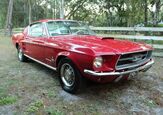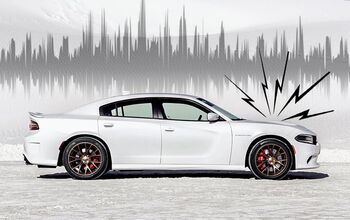Everything You Need To Know About Stellantis' New Hurricane 4 Engine

With the debut of the 2026 Jeep Grand Cherokee, Stellantis has unveiled its newest gasoline engine, a 2.0-liter turbocharged four-cylinder called the Hurricane 4, marking the latest evolution in the automaker’s internal combustion lineup. The Hurricane 4 is designed to deliver six-cylinder performance from a compact, efficient package and replace the aging Global Medium Engine.
Key Points
- Stellantis has introduced the 2.0-liter Hurricane 4 Turbo, a clean-sheet four-cylinder that produces 324 horsepower and 332 lb-ft of torque—delivering six-cylinder performance with four-cylinder efficiency.
- The engine uses Turbulent Jet Ignition (TJI)—a Formula 1–derived system that creates faster, cleaner, and more complete combustion, improving both power and fuel economy while cutting emissions.
- Built on a die-cast aluminum block with aerospace-grade plasma cylinder coatings, the Hurricane 4 is designed for hybrid and plug-in hybrid compatibility and will debut in the 2026 Jeep Grand Cherokee before expanding to other Stellantis models.
The Hurricane 4 produces 324 horsepower and 332 lb-ft of torque, making it one of the strongest four-cylinder engines currently available across the industry—in fact, its 162 hp/L power density leads the segment. Peak torque arrives between 3,000 and 4,500 rpm, though 90 percent of it is available from as low as 2,600 rpm.
A variable-geometry turbocharger delivers up to 35 psi of boost, using movable vanes to provide quick response at low engine speeds while maintaining consistent airflow at higher revs. According to Stellantis, the engine delivers 20 percent more power while using 10 percent less fuel than its outgoing 2.0-liter DOHC turbo.
While it shares its displacement with previous Stellantis engines, that's about all it shares—the Hurricane 4 is an entirely new design derived from the company’s 3.0-liter inline-six architecture.
The Hurricane 4 carries over the six-cylinder’s basic bore and stroke but incorporates several engineering improvements meant to increase both strength and efficiency. The block is a die-cast aluminum structure with deep skirts that extend below the crankshaft, improving rigidity and reducing vibration.
Stellantis uses Plasma Transfer Wire Arc coating rather than traditional iron cylinder liners, a process that reduces friction and helps manage heat—the automaker claims ten times greater wear resistance using this process.
The block and head are strengthened with thicker walls and larger bearings, while a viscous crank damper and balance shaft assembly reduce noise and harshness. The balance shafts, which counteract vibration in four-cylinder engines, have been relocated from the sides of the block into the crankcase for smoother operation.
While the head design is a modern twin-cam layout with four valves per cylinder, the Hurricane 4’s fueling and ignition systems are where things get interesting. It uses both port and direct fuel injection to balance efficiency and performance. During light loads, the engine relies on port injection for smooth operation and lower particulate emissions, while both systems engage during acceleration and peak power demands.
The engine's real party trick is the introduction of Turbulent Jet Ignition (TJI), a combustion system originally developed for Formula 1.
This system uses a small pre-chamber machined into the head. When the air-fuel mixture compresses, a portion is pushed into the pre-chamber, where it ignites first—each cylinder has two spark plugs, one for the pre-chamber and another for the main chamber. The resulting flame jets through a series of fine orifices into the main combustion chamber, creating a rapid and nearly complete burn. The concept borrows lessons from Ferrari's Formula 1 engines and Maserati’s Nettuno V6, but Stellantis has adapted the process for large-scale production and longevity.
The engine runs on the Miller cycle and achieves a 12:1 compression ratio without pre-detonation, even on regular 87-octane fuel. That, combined with its turbos and twin fuel injection setup, offers flexibility across a wide range of driving conditions and vehicle applications.
The engine's cooling and lubrication systems have also been reworked for efficiency. The engine uses an electric water pump and a variable-displacement oil pump to minimize parasitic losses, while sodium-filled exhaust valves improve heat management.
The Hurricane 4 will be assembled at Stellantis’ Dundee, Michigan plant, with production later expanding to Kokomo, Indiana—the same facility that produces the aluminum blocks for the company’s larger Hurricane inline-six. Internally referred to as the GMET4 Evo, the engine is expected to appear in other Stellantis vehicles, including the next-generation Jeep Cherokee and other models across the company’s global lineup. The upcoming Ram Dakota midsize truck is a good bet to receive this engine, along with potentially the Jeep Wrangler and Gladiator, maybe even the Dodge Charger.
Become an AutoGuide insider. Get the latest from the automotive world first by subscribing to our newsletter here.

An experienced automotive storyteller and accomplished photographer known for engaging and insightful content. Michael also brings a wealth of technical knowledge—he was part of the Ford GT program at Multimatic, oversaw a fleet of Audi TCR race cars, ziptied Lamborghini Super Trofeo cars back together, been over the wall during the Rolex 24, and worked in the intense world of IndyCar.
More by Michael Accardi




































Comments
Join the conversation
"Stellantis uses Plasma Transfer Wire Arc coating rather than traditional iron cylinder liners..." Shades of the 1970's Chevy Vega or Chrysler's own K-Cars. No thank you!
".....along with potentially the Jeep Wrangler and Gladiator...." Stellantis merely dipping its toes into the water rather than going full bore (pun intended) with this engine, such as putting it into Wranglers where it's really needed is a tell of the extent of its stodgy diffidence.....let the buyers do the shake down testing before committing resources. As a Jeep manufacturer, Stellantis totally lacks fearlessness.